The complete guide to the battery revolution
German ministers aren’t known for making exaggerated statements. So when, this past January, Anja Karliczek, the German government’s minister for education and research, said battery technology was an “existential” matter, she wasn’t stoking unfounded fears. Instead, she was boiling down the reality of what the German car industry needs to stay relevant in the future.


German ministers aren’t known for making exaggerated statements. So when, this past January, Anja Karliczek, the German government’s minister for education and research, said battery technology was an “existential” matter, she wasn’t stoking unfounded fears. Instead, she was boiling down the reality of what the German car industry needs to stay relevant in the future.
In the home of Volkswagen, BMW, and Mercedes-Benz, the car industry makes Germany’s economic engine turn. It accounts for one-seventh of the country’s jobs, one-fifth of its exports, and one-third of its spending on research and development. But these giants of the internal-combustion engine era are facing a new challenge. As the world looks to clean up its cities and cut carbon emissions to fight climate change, it’s starting to pivot to battery-powered electric cars.
In 2018, Germany produced over 5 million cars (more than every country except China, the US, and Japan), but it still doesn’t have a battery gigafactory. Last month, construction began on the country’s first, which will manufacture batteries to sell to BMW. It’s being built by CATL, the world’s largest maker of lithium-ion batteries. In the heart of Germany’s proud auto industry, this important new player isn’t homegrown: the eight-year-old company, valued at $29 billion, is Chinese.
Few sectors of the global economy have seen as rapid a rise as the battery industry in recent years. Between 2005 and 2015, the world’s output of lithium-ion batteries grew 10-fold. And analysts project it to grow five times as large again by 2025.
Lithium-ion batteries are found in almost every portable electronic device in use today, from deep-sea drilling equipment and the Boeing 787 Dreamliner to smartphones and the Tesla Model S. Everyone knows what a blessing—and, sometimes, curse (#lowbattery now has its own meme)—rechargeable lithium-ion batteries have been.
The question in 2019 isn’t whether battery-powered cars will outnumber gas-guzzlers, but when. In fact, some startups have even begun to aim higher, looking to build small, battery-powered commercial planes by 2022. Batteries can also be wielded to smooth out intermittent, zero-carbon sources like wind and solar power at grid scale. Forecasters are so optimistic about the electrification of transport, some now predict that, instead of oil supply running out, oil demand will peak by 2036—perhaps in time to hit some Paris climate agreement goals.
Hundreds of startups, research laboratories, and established corporations are trying to grab a piece of this potential trillion-dollar industry. Whoever comes up with the next big battery technology could position themselves as the ExxonMobil or Shell of the 21st century.
It’s no surprise there are many claimants to the throne. The countries that house these companies could also reshape geopolitics. I spent the last year traveling from Shenzhen to San Francisco to look under the hood of the most innovative startups and the world’s largest battery companies, to separate the pretenders from the contenders.

Table of contents
- Why lithium-ion batteries dominate
- Terms to help you understand batteries
- The four big battery players
- What is Big Oil doing?
- The next industries batteries can disrupt
- Do we have enough metals?
- Big Oil’s big challenge

THE DOMINANT TECH
Li-ion King
A battery is essentially any device that converts chemical energy to electrical energy. The first one, invented by Italian chemist Alessandro Volta in 1799, was simply two metal plates, one made of copper and one of zinc, with a piece of salt water-soaked cardboard placed in between.
Volta’s creation, which he called the “Voltaic Pile,” was revolutionary. It was the first human-made device to provide a steady source of electricity, and led to the discovery of many elements on the periodic table and the rules of electromagnetism.
The battery’s basic structure hasn’t changed since the turn of the 18th century. Just like the Voltaic Pile, your smartphone battery has two electrodes (anode and cathode) dipped in a conductive solution (electrolyte) with a separator that controls the flow of the electric charge. But the Voltaic Pile had to undergo some major improvements before it could become practical for everyday use.
Improvement #1: Rechargeability
First off, Volta’s version of a battery produced only small amounts of electricity, while consuming heaps of metal. For instance, to power my flat in London on the Voltaic Pile, I would need a combined 11,000 kg (some 24,000 lbs) of copper and zinc—every day.
To make any real use of electrical power, the world had to wait until French physicist Gaston Planté invented the lead-acid battery 60 years after Volta’s device. It was the world’s first rechargeable battery, and within a few decades it was already in use on a mass scale to power early automobiles.
The battery offered major advantages over 19th-century cars powered by internal-combustion engines, which needed to turn a hand crank to start the noisy, fume-spewing vehicles. Cars that could run on battery-powered electric motors started without physical effort, were quieter to drive, and had no emissions. Rechargeability, of course, was key: it wouldn’t be financially or practically feasible to throw away and replace the car’s battery every day.
That doesn’t mean single-use batteries don’t have a place in today’s world. For example, they are still useful for powering small devices while on camping trips or as backup emergency situations. But rechargeable batteries have improved so much that, even for small devices, it is starting to make less and less sense to use disposable batteries.
Improvement #2: Energy density and power capacity
Ironically, batteries also helped bring an end to the reign of the electric car. Manufacturers realized they could put electric starters, powered by lead-acid batteries, in gasoline cars to make hand cranks redundant. At the same time, Henry Ford’s production lines made gas-powered cars more affordable. Customers got used to driving longer distances and began to demand higher top speeds, and cars powered by lead-acid batteries did not have the power or range to compete with gas-powered vehicles.
The gas-powered car has dominated ever since. Small tinkering made it more efficient and, apart from the 1970s oil crises, the world never had to face any real threat to oil supply.
Things started to change in the 1990s, when the state of California created regulations to cut particulate pollution and the transport sector’s carbon emissions. By then, chemists had developed batteries that performed better than lead-acid, and some car manufacturers were making hybrids, like the Toyota Prius, that used batteries to boost gas mileage.
In 1996, General Motors made the first major attempt to revive the fully electric car by releasing the EV1, powered by a nickel metal hydride (NiMH) battery. The NiMH’s power capacity—the measure of how much energy it can deliver in a short time—was much better than that of lead-acid. But its energy density—the amount of energy stored in the battery per kg—was still quite low. That meant the EV1’s range was a measly 100 miles (160 km).
There were many business and political reasons for EV1’s demise—well documented in the 2006 documentary Who Killed the Electric Car?—but the batteries were a major contributor. “The battery technology was not there and we knew it,” said Jon Bereisa, the EV1’s chief engineer, in the 2011 book Bottled Lightning.
It took lithium-ion technology to make fully electric cars a real possibility.
Lithium-ion batteries don’t just have higher power capacity than other technologies, but also much higher energy density—twice that of NiMH batteries, for example. This enables them to provide the type of range and power that people have come to expect from gas-powered cars.
In many cases, lithium-ion-powered engines can even outperform combustion engines. For example, one of the newest electric cars is a 5,500 lb pickup truck made by Rivian, a US startup. The truck has a range of more than 400 miles and can go from zero to 60 mph in three seconds—an astounding feat for a pickup.
Improvement #3: Cost
People have long been willing to pay higher prices for the flexibility of portable devices. When the Japanese electronics company Sony introduced the first commercial lithium-ion battery (as the power source for its camcorders), it became an instant success. That pushed the electronics industry to work on bringing down the cost of lithium-ion batteries, which in turn made possible a growing number of portable devices.
Still, in applications such as electric cars, which require thousands of times more energy than, say, smartphones, lithium-ion batteries remained too pricey—until recently.
According to Bloomberg New Energy Finance, every time lithium-ion battery sales doubled over the past decade, it led to production costs dropping by about 18%. The result, in the lithium-ion-battery business, is a 20 kWh battery—like those typically found in plug-in hybrids—now costs only $3,500, compared to about $23,000 in 2010.
Even at current costs, however, lithium-ion batteries are only available in luxury electric cars or in devices, such as smartphones, where space is a premium. There are plenty of other battery needs, and until lithium-ion costs fall further, there is room for different chemistries. Lead-acid batteries remain a mainstay as the energy source for starting up gasoline-powered cars. Nickel-cadmium batteries are widely used in power tools. The nickel-metal-hydride battery is used in many hybrid electric vehicles.

MATTERS OF DEFINITION
Like much modern technology, batteries are inscrutable devices. Most of the time, you never see them, and in many cases you can’t even take them out of devices to get a closer look. When you can, you’ll most likely find little more than lots of words and numbers written in small print—including a warning to never cut open the case.
If you want to understand where this potential trillion-dollar industry is headed, it’s essential to understand at least some of the jargon used in the business.
Power vs. energy: Though in common parlance, people use “energy” and “power” interchangeably, it’s important to differentiate between them when talking about batteries. Power is the rate at which energy can be released. Think of power like a car’s acceleration capabilities, and energy like the car’s range on a full tank. Different applications require different power and energy levels. An electric drill, for example, requires high-power batteries, while storing solar energy for use when the sun sets requires high-energy batteries.
Watt (W): The rate at which energy is supplied. A small refrigerator requires about 100 W of power. An iron can be rated as high as 2,000 W, or 2 kilowatts (kW). A modern wind turbine can generate as much as 8,000 kW, or 8 megawatts (MW), of power. A typical nuclear reactor can generate more than 1,000 MW, or 1 gigawatt (GW), of power.
Watt-hours (Wh): A unit of energy, where 1 Wh is equal to consuming 1W of power for one hour. It’s the unit that appears on your utility bill. A typical household in the UK consumes about 10 kWh of energy each day.
Wh per kg (Wh/kg): How much energy is contained in a kilogram of a given material. The unit matters because the heavier the battery, the more energy it will take for a car or plane to lug it around.
Wh per liter (Wh/l): How much energy is contained in a liter of a given material. The unit matters because the space available in a car to store the battery is limited.

CAST OF CHARACTERS
The Asian Giants
The lithium-ion battery companies vying to transform the battery industry aren’t consumer brands like Energizer or Duracell, which make up only a tiny fraction of the sector’s sales. Most batteries are sold to other businesses, such as makers of smartphones or cars. That means the names of the giants in the field aren’t always well known outside small circles. What’s common about these names, however, is that all of them are Asian.
Panasonic

It’s unusual for a risk-averse Japanese corporation to work with a mercurial Silicon Valley CEO. But if you own a Tesla, then Panasonic batteries power you on the road.
The Japanese electronics company is 100 years old, and reached the height of its global power in the 1980s, when the VHS video player was a hit. Since then, Panasonic has lost billions trying its hand at new technologies, such as plasma TVs, that have failed to gain a foothold in the market. The partnership with Elon Musk’s Tesla is yet another significant wager.
“Where the average person might be too scared to do anything, he’s flooring the gas pedal,’’ current Panasonic CEO Kazuhiro Tsuga told Bloomberg about Musk. “Without someone like him, adoption of electric vehicles will have a really hard time.’’
Panasonic has sunk $2 billion annually into its auto division in recent years. A large chunk of that investment has been towards building Tesla’s Gigafactory 1 in Nevada, where the floorspace is split between the two companies. In the short term, the bet is paying off. Following three quarters of losses, Panasonic reported that it made a profit in the last quarter of 2018, which coincided with record sales for Tesla’s model 3.
But it seems that a monogamous relationship wasn’t meant to be. In January, Panasonic announced it will create a joint venture with Toyota to make batteries for the Japanese automaker’s electric cars. Weeks later, when Tesla began construction on Gigafactory 3 in Shanghai in February, Musk said he’d be open to acquiring batteries from Chinese manufacturers.
Panasonic by the digits
- 2018 revenue: $71.6 billion
- Market cap: $35 billion
- Projected battery manufacturing capacity in 2022: 114 GWh
CATL
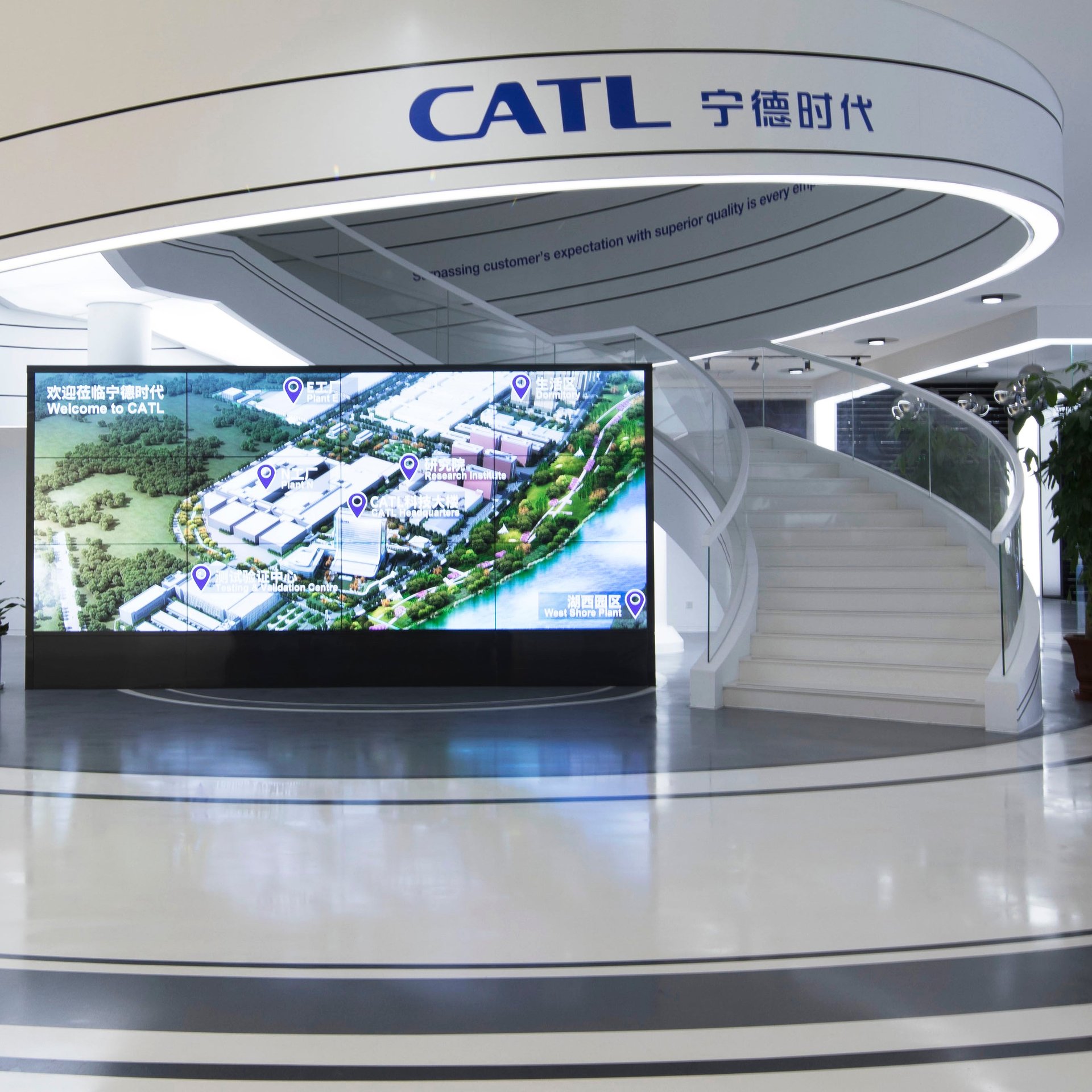
When Contemporary Amperex Technology Limited (CATL) went public in June 2018, only seven years after it was founded, it minted four new Chinese billionaires. The Ningde-based company’s investors hoped it would take on LG Chem of South Korea and Panasonic of Japan. But founder Zeng Yuqun says his company isn’t competing with other battery makers, but with the internal combustion engine itself.
The 51-year-old Zeng, now worth more than $5 billion, has spent most of his career making batteries. He created Amperex Technology Limited (ATL) in 1999 and licensed US technology to make lithium-polymer batteries—a type of lithium-ion battery most suitable for smartphones. By 2006, auto manufacturers started to inquire about ATL’s lithium-ion batteries. ATL even supplied batteries for the demo fleet of electric buses China rolled out for the 2008 Beijing Olympics.
Around then, the smog problem in Chinese cities reached a point that the country’s government considered untenable. In 2009, it launched a subsidy-driven program to promote electric cars and, by extension, lithium-ion batteries. For Zeng, it became clear that the electrification of transport was the future.
In 2012, ATL spun off its electric-vehicle battery business as CATL, in order to maximize the use of government subsidies, and to ensure it had the R&D resources necessary to compete with the other Asian battery giants. Since then, the company has signed agreements and supplied batteries to more electric carmakers than any other manufacturer. Including batteries produced to power electric buses, CATL is the world’s largest maker of lithium-ion batteries for electric vehicles today.
CATL by the digits
- 2018 revenue: $1.6 billion
- Market cap: $29 billion
- Projected battery manufacturing capacity in 2022: 104 GWh
BYD
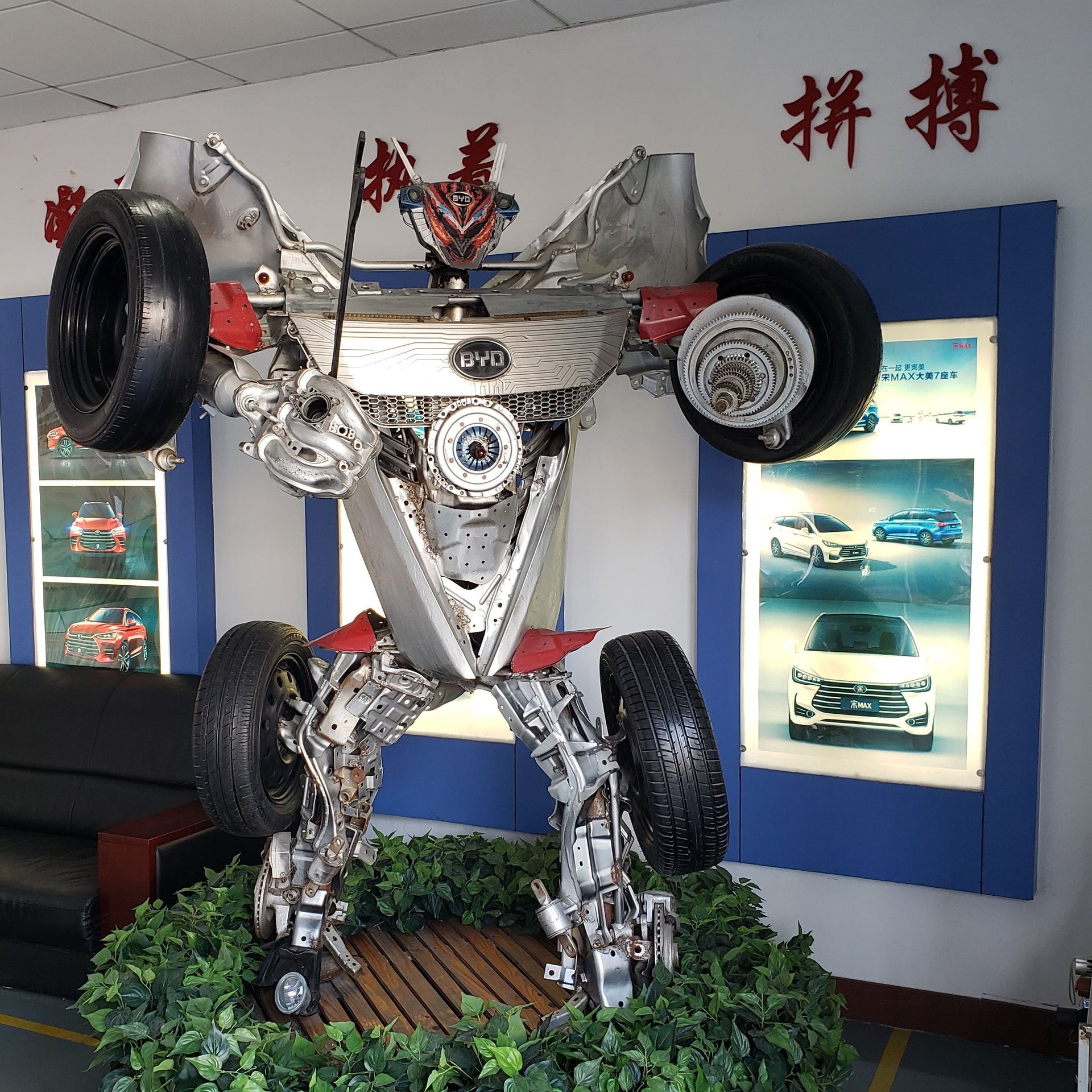
Headquartered in Shenzhen, BYD produces more electric vehicles—fully electric cars and buses, and plug-in hybrids—than any other company in the world. All the batteries in these EVs are also manufactured by BYD, which makes it a uniquely integrated battery-and-car company. In fact, BYD began its life as a battery company and added the car business later.
The strategy has worked to its advantage—so far. Since 2009, as the Chinese government doubled down on a subsidy-driven program to create a market for EVs, BYD has blossomed. But the subsidies have been cut this year and might go away completely by 2020. And that means BYD is having to rethink how it does business.
In December, BYD announced it will spin off its battery business into a separate company, with plans for an initial public offering as early as 2022. The logic is that the separation would enable BYD to sell its batteries to other EV makers, which currently consider BYD a competitor.
BYD by the digits
- 2018 revenue: $6.1 billion
- Market cap: $20.6 billion
- Projected battery manufacturing capacity in 2022: 60 GWh
LG Chem
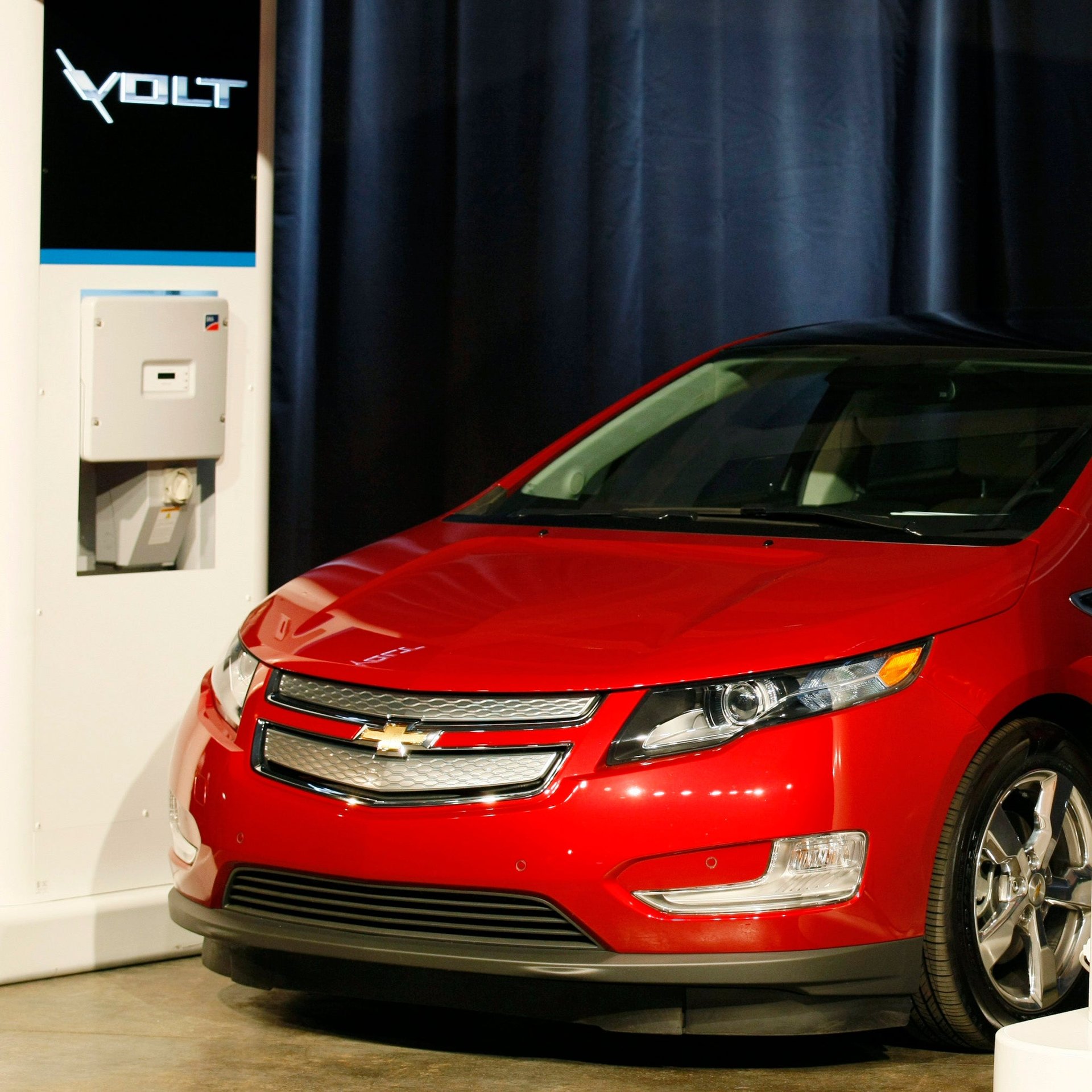
Following the financial crisis of 2008, the US government under newly elected president Barack Obama put together a large recovery package to bail out failing banks and to finance infrastructure projects. The goal was to stop the economy from grinding to a halt.
As part of that package, the US Department of Energy had some $400 million to dole out towards building a large US battery factory for electric vehicles. LG Chem, a South Korean chemicals company, got a $150 million grant. It found an immediate customer in General Motors, which was about to launch the plug-in hybrid Chevy Volt (which ultimately went on sale in December 2010). LG Chem hasn’t looked back since.
If a global car brand doesn’t have a deal with CATL or Panasonic, it’s a good bet its batteries come from LG Chem. The company supplies to Jaguar, Hyundai, Renault, Ford, Volvo, and, of course, GM.
With subsidies from the Polish government, LG Chem is also planning to expand its battery plant near Wrocław into what would be one of the European Union’s first gigafactories. And it’s building an even bigger factory in China, designed to supply international carmakers launching models for the country’s growing EV market.
LG Chem by the digits
- 2018 revenue: $6.5 billion
- Market cap: $23 billion
- Projected battery manufacturing capacity in 2022: 55 GWh

HISTORICAL INTERLUDE
Big oil’s big bet
The oil industry might have invented the means of its own end: lithium-ion batteries.
In the early 1970s, the fossil-fuel majors began to fear oil was about to run out, as the industry was discovering fewer and fewer new wells. Then, in 1973, the Arab-Israeli war broke out. In response to the US’s support of Israel, the Arab members of OPEC issued an oil embargo, leading as many as a fifth of all gas stations in the US to run dry, and plunging the global economy into recession.
The world’s dependence on oil was laid bare. The big fossil-fuel companies doubled down on efforts to research new energy sources and the infrastructure to support them, like nuclear power, solar energy, synthetic fuels, electric motors, and rechargeable batteries.
One of those projects, helmed by Exxon chemist Stanley Whittingham, led to the invention of the world’s first rechargeable lithium-ion batteries. Its cathode was titanium sulfide and anode was lithium metal. Exxon thought the batteries could be deployed in electric cars and began working on scaling up the project in the mid 1970s.
Then, in 1979, came another oil crisis and global recession, triggered this time by the Iranian revolution. Exxon was forced into cost-cutting mode, and the first line of business to get the ax was the research division. The company never released a commercially viable battery.
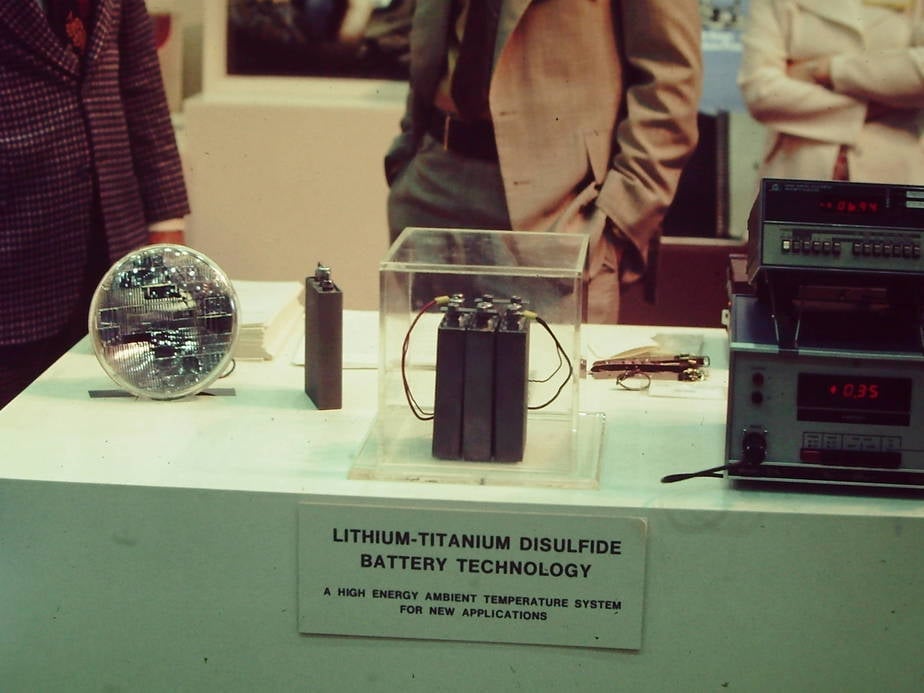
Fortunately, Whittingham’s work had sparked broader interest in the field. But there was still a major problem with his battery that needed to be fixed: it kept bursting into flames.
Three researchers provided the upgrades that transformed Whittingham’s invention into a commercial battery. First, John Goodenough, then a researcher at the University of Oxford, found that using cobalt oxide—instead of titanium sulfide—as the cathode made Whittingham’s battery more energy dense and increased how many charge-discharge cycles it could undergo without degrading. Then, in the 1980s, the Moroccan scientist Rachid Yazami found that using carbon—instead of lithium metal—as the anode made the battery significantly safer without hugely sacrificing how much energy the battery stored. Finally, Keizaburo Tozawa, then head of Sony’s battery division in Japan, put all these inventions together to create a commercial lithium-ion battery.
In 1992, Sony started offering the lithium-ion battery as an optional upgrade with its handycam. It was 30% smaller and 35% lighter than the standard nickel-cadmium battery, according to Seth Fletcher, author of Bottled Lightning. The timing couldn’t have been better. Consumer electronics were shrinking but batteries hadn’t caught up. The lithium-ion battery proved an instant success. Sony sold 3 million units in 1993 and 15 million in 1994.
Nearly three decades later, we’re still living through the revolution ushered in by Whittingham, Goodenough, Yazami, and Tozawa.
Even the oil industry has come full circle on batteries. In 2016, the French oil giant Total bought the French battery company Saft for $1.1 billion. In 2018, BP invested $20 million in Israeli startup StoreDot, which claims to make batteries that can be fully charged in five minutes. In 2019, Chevron invested in Natron Energy, which is building a cheaper and longer-lasting battery for backup systems; Repsol invested in Ampere, which connects battery systems to create a virtual power plant; and Shell acquired the German startup Sonnen, which provides home energy-storage systems.
On its website, ExxonMobil proudly shares the story of how the lithium-based battery was invented in its labs and celebrates the work of those involved. It doesn’t mention that, unlike many other oil giants, ExxonMobil doesn’t hold any investments in battery companies today.

THE NEXT LEAP
Lithium-ion batteries have transformed consumer electronics and kickstarted the process of electrifying buses and luxury cars. Entrepreneurs hope future iterations of Li-ion technology, or some other battery chemistries, will disrupt even more industries. We’ve highlighted a few of these sectors below, along with the the companies we believe to be the most promising in each.
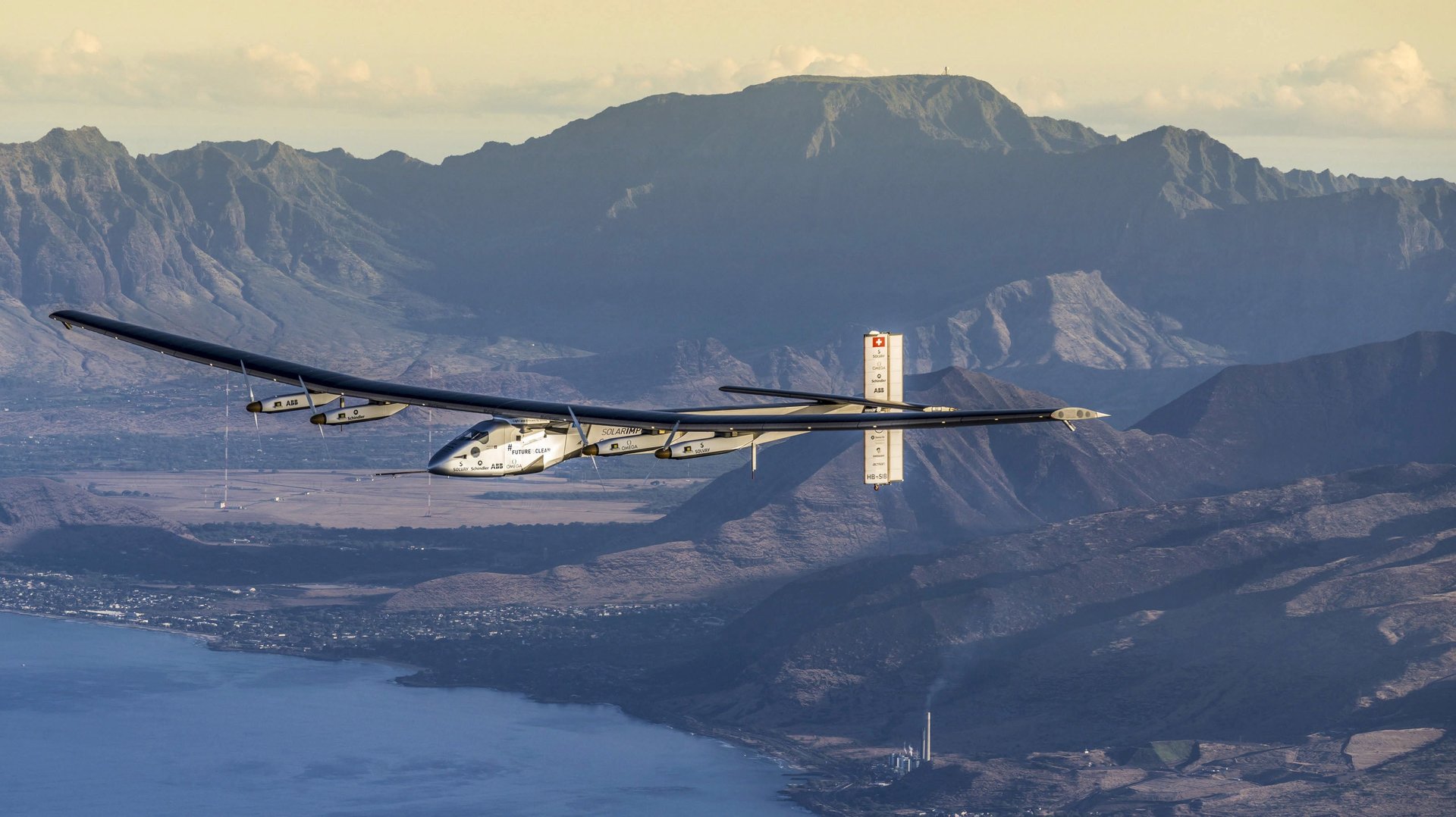
Electric planes
In theory, electric planes would be much quieter and cheaper than what we have today, while also also producing zero emissions. Electric planes with a 1,000 km (620 mile) range on a single charge could be used for half of all commercial aircraft flights today, reducing the total emissions from global commercial air travel by approximately 15%.
The trouble is electric planes won’t become a reality without fundamental breakthroughs in battery technology.
A study published in Nature Energy in February showed that batteries with an energy density of 800 Wh/kg—approximately four times as energy dense as the best current commercial battery—would be enough to power an airplane the size of an Airbus A320 or Boeing 737, which seats 180, to go a little further than 1,000 km.
(Currently, most countries’ regulatory agencies require that commercial planes carry enough reserve fuel to reach an alternative airport if for some reason they can’t land at their planned destination. The exact amount is calculated based on the plane’s planned itinerary. Because there are no electric planes yet, there are no regulations on reserve range. But it’s almost certain that regulators will put similar safety measures in place for electric planes when the time comes.)
That kind of technological leap in battery development will likely take decades, says Venkat Viswanathan, a battery expert at Carnegie Mellon University. Until then, startups are looking to build smaller planes (seating up to 12 people), which could fly on relatively lower power-dense batteries, or electric hybrid planes, where jet fuel does the hard lifting and batteries do the coasting.
Battery startups to watch: Pellion Technologies, PolyPlus, Solid Power, Cuberg, Romeo Power
Mass-market electric cars
So far, electric cars have remained the playthings of rich people. They can also be an economical option but only for those who drive a lot.
Elon Musk thought Tesla’s $35,000 Model 3 would be the first mass-market electric car. There’s some logic to the claim. The average cost of a new car in the US is about $35,000 and in Europe about €29,000 ($33,000).
Of course, that perspective is decidedly Western (and ignores a basic tenet of statistics that the median price is probably a better target than the mean if a company is aiming for the mass market). The average cost of a new car in India and China—which are the world’s biggest- and fastest-growing car markets, respectively—is a fraction of that in Europe and US. The most affordable all-electric sedans currently available in India and China cost about $20,000.
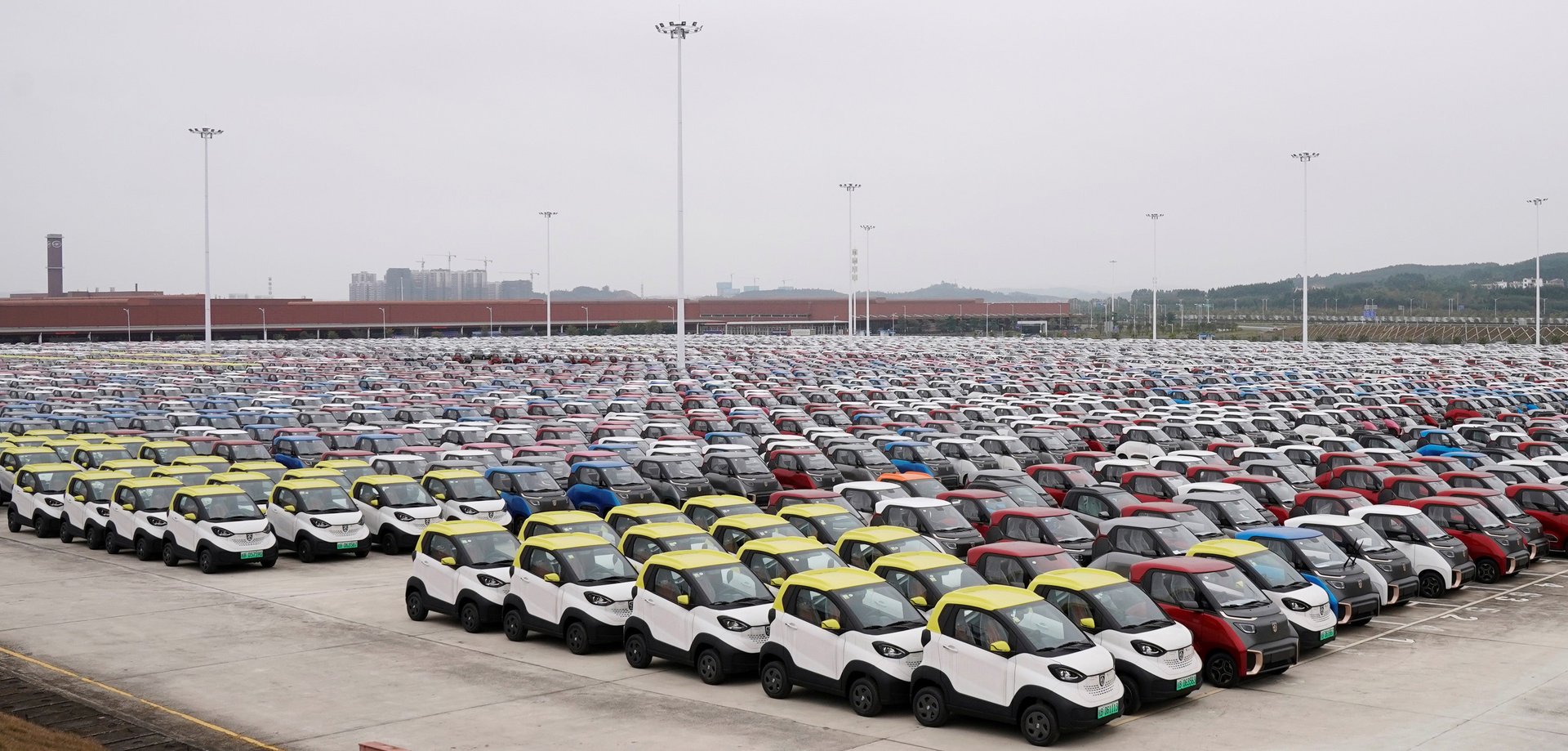
But electric cars are still generally much more expensive than gas-powered cars. That’s why, to push sales, the Chinese government doesn’t just provide lots of direct subsidies, but also restricts the license plates granted to gas-powered cars. This carrot-and-stick combination has helped China to become the world’s largest seller of electric cars.
Not every country can afford the kinds of generous incentives the Chinese government provides. For “sustainable transport” to flourish, electric cars need to become a lot more affordable, which means batteries need to come down in price as well.
The global average battery currently costs around $200 per kWh. The US Department of Energy calculated that once that falls below $125 per kWh, the cost of owning and operating an electric car will be cheaper than a gas-powered car in most parts of the world, and for most types of driving needs.
It doesn’t mean electric vehicles will win over gas-powered vehicles in all niches and domains—for example, long-haul trucks don’t yet have an electric solution—but it would be a tipping point where people will start to prefer an electric car simply because it makes economic sense.
Battery startups to watch: QuantumScape, Amprius, Sila Nano, Enovix
The 100% renewable future
Eventually, the world will need to live on 100% renewable energy. The question is whether we can get there before breaching planetary boundaries and unleashing catastrophic climate change.
Batteries can help smooth out the intermittent power provided by solar panels and wind turbines. But they can’t solve all our energy-storage needs, says Yet-Ming Chiang, a battery expert at the Massachusetts Institute of Technology. He reckons that lithium-ion battery prices will bottom out at about $80 per kWh; they likely can’t get any lower because the costs of the necessary raw materials. That’s more than cheap enough to surpass the projected threshold for making electric cars financially feasible, but to store energy for the weeks and months required by the electric grid, we’ll need batteries costing less than $10 per kWh.
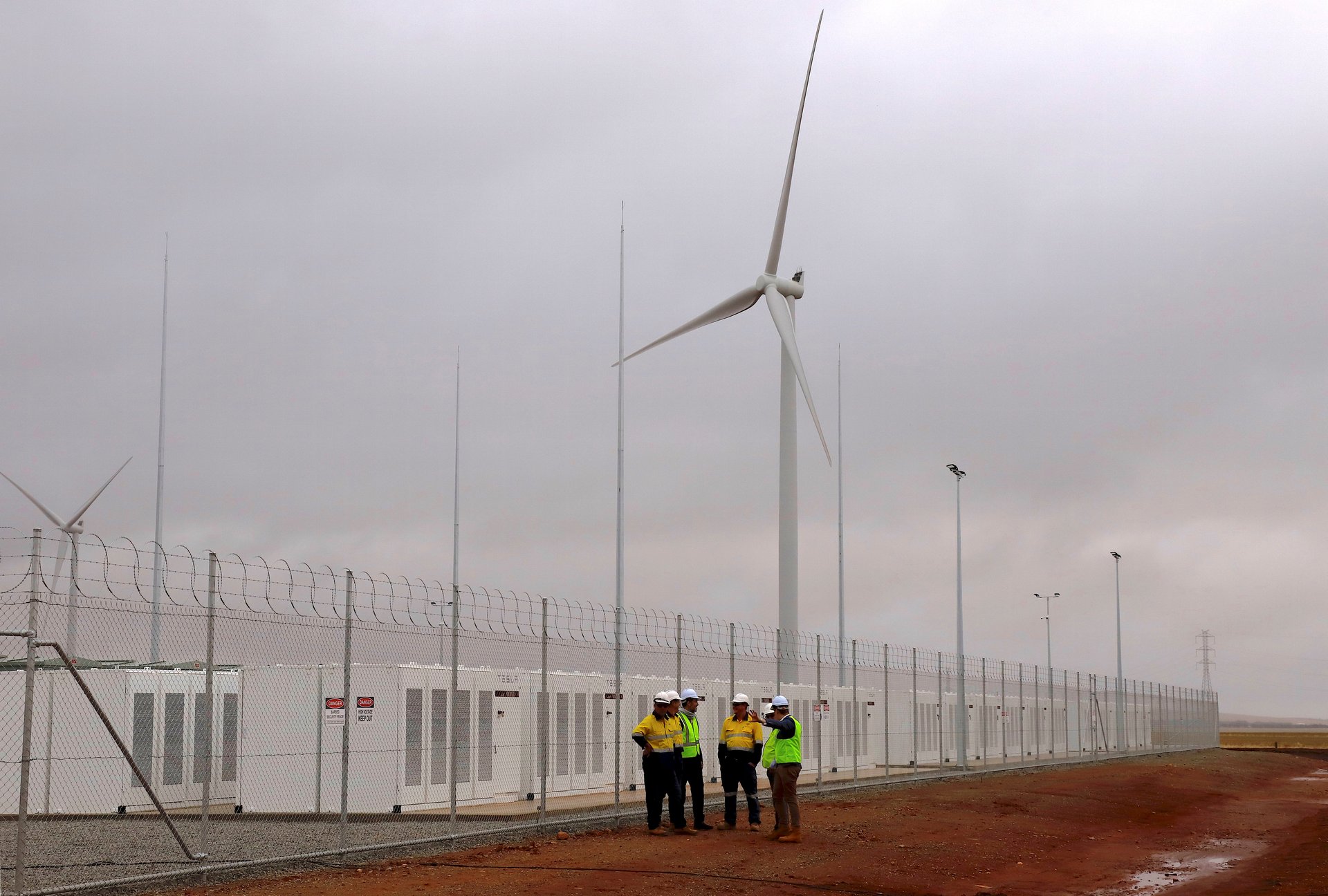
Startups are working on the problem, but so far, the technologies that can deliver energy storage at this low cost wouldn’t be classed as batteries. For example, Malta, created in Alphabet’s moonshot lab, is building a reversible refrigerator that converts excess electricity into heat and then turns it back into electricity when needed. Theoretically, according to Nobel Laureate Robert Laughlin, whose research paper was the basis for launching Malta, the cost of storing energy using the technology could be as low as $13 per kWh.
Form Energy, launched by Chiang (who, aside from teaching at MIT, is also a serial entrepreneur), is working on a reversible power plant that uses sulfur. The company’s tech is at a very early stage of development, but it aims to bring energy-storage costs down to an even lower level than Malta’s technology.
That is not to say that batteries—and even lithium-ion batteries—won’t play a role. In 2017, Tesla built a 129 MWh battery array made up of lithium-ion batteries in Hornsdale, Australia, which is successfully protecting the state of South Australia from blackouts and earning its owners millions of dollars annually. Home-energy storage systems sold by Sonnen, a German startup, is helping consumers live completely off the electricity their solar panels generate. These sorts of batteries, at a larger scale and when combined with solar or wind, can often be a cheaper option to serve remote communities than building out expensive grid lines.
Energy-storage startups to watch: Malta, Primus Power, Form Energy, Redflow, Sonnen, Natron Energy

The resource constraint
If lithium-ion batteries are to live up to their potential, they’ll have to do so in a resource-constrained world that needs sustainable solutions. Some of the critical metals that go into these batteries—lithium, nickel, cobalt, and manganese—are, today, mined in unsustainable ways.
When it comes to problematic metal-mining practices, cobalt gets the most attention, and rightly so. About 60% of the world’s cobalt is mined in the Democratic Republic of Congo, where children are often employed in toxic environments. The unstable governance of the country contributes to the wild swings cobalt prices have seen in recent years.

Cobalt solutions
The battery industry is currently trying to reduce its dependence on cobalt. China, for example, produces lithium-ion batteries that use lithium iron phosphate (LFP) as the cathode instead of the nickel-manganese-cobalt (NMC) mixture used by most of the automakers outside China. Though LFP batteries are less energy dense than NMC batteries, they are cheaper, and have successfully been applied in fleets of electric buses (and even some taxis). Nearly all (99%) of the world’s electric buses operate in China.
Meanwhile, manufacturers of batteries for electric cars have started to work on versions of the NMC cathode that uses far less cobalt. Currently, most of these batteries use NMC 111 cathodes—“111” refers to the ratio of each metal inside the cathode, so, in other words, one part nickel for every one part manganese for every one part cobalt. Experts expect that NMC 811 cathodes, which have much more nickel than manganese and cobalt, will be in wide commercial use by 2025.
Startups are also looking for opportunities to ease the pressure on critical minerals. Breakthrough Energy Ventures, a $1 billion Bill Gates-led fund, recently invested in Kobold, a Silicon Valley startup looking to deploy artificial intelligence to find cobalt reserves in parts of the world where labor and environmental laws are stricter than those found in the Congo.
Deep Green, a Canadian startup, is looking to the high seas, in an effort to mine battery metals from seafloor beds in the Pacific Ocean’s Clarion Clipper zone. The historical horrors of resource-extraction practices on land, such as toxic tailings leaking into rivers and lakes, make environmentalists recoil at the idea of letting loose mining operations in deep oceans. But Deep Green CEO Gerard Barron argues that, at about 4,000 meters below sea level, biodiversity is a tiny fraction of that on land, so there’s relatively little environmental risk. In addition, ocean-floor mining doesn’t require the digging of land mining. Instead, it’s simply about plucking large blobs of metal ore, formed naturally over millions of years, from the surface of the ocean floor. In theory, that should make it much more environmentally friendly. Deep Green has also recruited Greg Stone, a well-regarded marine conservationist, to ensure its operations will follow the strictest environmental regulations.
In April, an independent group of scientists will launch a study into the environmental impact of harvesting metals from a small patch of the deep ocean. If all goes to plan, Barron says, based on current projected needs, there should be enough metal on the ocean floor to make land-based mines redundant.
The circular economy
Some companies are attempting to cut overall cobalt use by finding a second use for depleted EV batteries. Nissan and Renault, for example, are both running pilot tests seeing if their EV batteries could be used for energy-storage on the electric grid.
Not everyone thinks this is wise. Shilin Huang, co-founder of CATL, notes that EV batteries are energy-dense, designed to go through at most two charge-discharge cycles in a day. When these batteries are used in an energy-storage system for the grid, the number of charge-discharge cycles can dramatically increase, which increases the risk of “instabilities” and eventually fires.
In any case, the laws of physics are such that you can’t build a battery with infinite charge-discharge cycles. Every battery will eventually die. That means tackling the recycling challenge one way or another on all fronts: technology, economics, and regulations.
An unlikely place to draw inspiration from is lead-acid batteries. In most Western countries, the majority of the lead used to make lead-acid batteries comes from recycled sources. While there are plenty of untapped lead reserves out there, recycled lead is often cheaper, because the energy cost of recovering lead from scraps is lower than extracting it from ore. The system isn’t perfect. Lead recycling in poor countries often happens with little regard for the environment. But examples set by Europe and the US, where the process is done right, show that recycling of critical minerals can be performed economically at scale.
Audi recently teamed up with materials company Umicore to find out if current recycling technology could work for lithium-ion batteries. The results of the collaboration were published last November and found that 95% of valuable minerals—cobalt, nickel and copper—inside a lithium-ion battery can theoretically be recycled. But the question remains whether it can be done at scale and at a price the industry can bear.
“As the cost of the batteries fall, you have to ask whether what you spend on getting the metals back out is worth it or not,” Mike Fetcenko, head of the US division of BASF, a global chemicals company, said in 2018. The only way to incentivize recycling in this environment may be through government regulation. It seems to be working in China: In 2018, Beijing issued new rules requiring Chinese automakers to take responsibility for recycling the lead in their car batteries. As the effective date of the new rules approached, a number of Chinese companies, including BYD, announced plans to open recycling plants.
Elsewhere, regulatory bodies are trying to catch up with China. An EU-commissioned report published in November 2018 slammed the bloc for not having better regulations for the recycling of lithium-ion batteries. In the US, the federal Department of Energy announced in February 2019 that it will commit $15 million towards research into recycling.
GaoGong Industry Institute, an electric-car industry research firm, estimates that China will accumulate 250,000 metric tons of depleted lithium-ion battery waste in 2020 alone. The numbers will grow each year after that. If these predictions come true, without adequate recycling efforts, the promises of using lithium-ion batteries for “sustainable” transport would ring hollow. The battery industry needs to act fast.

Big Oil’s big challenge
For all the bad rap they get, fossil fuels are the perfect way to store energy. They are cheap to extract, easy to transport, and, to use them, you can just light them on fire. In addition, no other form of energy storage comes close to the energy density of fossil fuels.
Batteries are far less convenient. They are bulky, need lots of metals, and require sophisticated technology to use. But battery technology has made huge progress in the last 30 years. Lithium-ion batteries are only an order of magnitude worse than oil in terms of energy density.
Given enough time, batteries can beat out fossil fuels both on economic terms and technology terms. Eventually, fossil fuels will start to run out and thus become more expensive. And battery chemists will continue to increase the energy density of batteries to get within spitting distance of fossil fuels.
But the ravages of climate change have installed a limit on how long we could wait for the transition to happen. Without cutting carbon-dioxide emissions, many large parts of the planet could become uninhabitable for humanity within a century. We just don’t have the time to see the technology fight play out. That’s why the battery revolution isn’t being driven simply by economics, but also by regulation.
Big Oil has a history of fighting and often defeating regulations that threaten its business model. This time, however, it seems unlikely they stand a chance against the harsh realities of climate change. Big Oil can either fight the ascendancy of batteries, or help fight climate change instead.